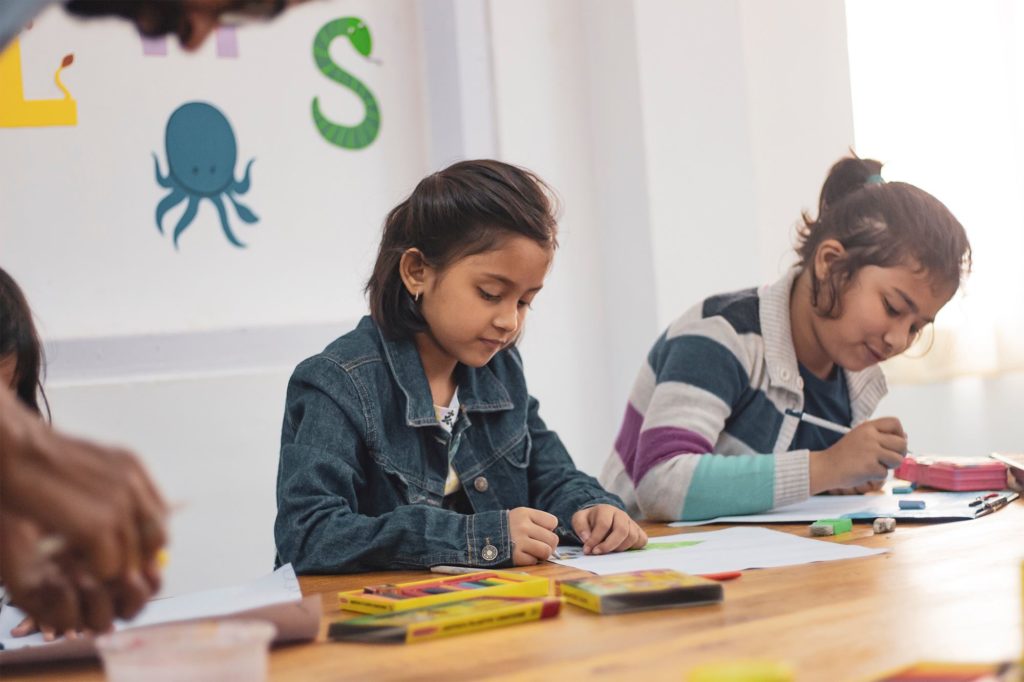
Student teaching is more than just a box to check before heading into the profession, it’s an essential glimpse into the world of a teacher. The student teaching experience is an opportunity to gain insights that will hopefully shape how you will inspire your future students.
“The mediocre teacher tells. The good teacher explains. The superior teacher demonstrates. The great teacher inspires.”– William Arthur Ward
Why Do I need to Student Teach?
The purpose of student teaching is to provide practical “real life” opportunities that are the same or similar to a full-time teaching position. During this essential stage of your career, you will develop the skills needed to be a professional teacher. You’ll also adopt the values that shape your approach to teaching.
“[Kids] don’t remember what you try to teach them. They remember what you are.”- Jim Henson
Whether Jim Henson was 100% right is not the point of this quote. The essence of what Mr. Henson is saying is that your students will remember the type of person you are. Student teaching, if you will, is the tadpole stage of who you will become as a professional educator.
How does student teaching work? Student teaching is the final field experience before beginning your career as a teacher. Of course, by this point, student teachers have significant skills under their belt. At this stage of your degree, you’ll have demonstrated different competencies in previous practicum experiences. By the end of your student teaching semester, you should have what it takes to effectively manage your own classroom. You’ll need to make sure that this final field experience counts!
Who is Involved in My Student Teaching Experience?
You won’t go through the student teaching experience without support. In fact, there may be student teacher opportunities in your own community, so you’ll have the support of local friends and family. Student teachers work closely with a variety of professionals during their experience including:
- The Department Head at the university
- A Teacher who is typically seasoned in the profession and cooperating with your university. It’s preferable for the cooperating teacher (or mentor teacher) to be licensed in your subject area.
- A University Supervisor who is typically a faculty member or in some cases a graduate student at your university. This person observes and provides feedback.
- A Student Teaching Coordinator who is often times your supervisor, but not always. Some universities will use a separate individual to handle this position.
- An instructor who typically leads you through a seminar related to your student teaching experience.
What Does a Student Teacher Do?
What is student teaching like? A student teacher typically spends a few months to a year in a classroom with their cooperating teacher. These positions are usually unpaid and serve as professional training. Your student teaching placement provides you with the opportunity to experience different types of classrooms and age groups. If your area of focus is on elementary education, you might spend your time student teaching in a second-grade classroom. Sometimes students have a double major and will have two placements to train in each classroom setting.
Student teachers are paired with a cooperating teacher at their placement location. This person can also serve as a mentor throughout your student teaching experience (and perhaps beyond!) Under their guidance, you’ll prepare lesson plans, set up the classroom and teach the students. Your student teaching experience is likely to be much more gradual like this:
Week 1: Sitting on the Banks During your first week you are likely to actively observe the professional teacher. You will meet the students and gain an understanding of the general flow of your day.
Week 2: A Step in the Pond At this point, you’ll start planning and even teaching, but not all of the time. Depending on your supervisor and the cooperative teacher you may be required to plan and teach up to a quarter of the day.
Week 3: You’re Paddling After a couple of weeks getting acclimated, you’ll be ready to take on more of the planning and teaching. Typically, you’ll teach about half of the time at this stage.
Week 4: You’re Finding Your Stride Some people say it takes about a month to get used to a job while other say it takes 6 months to a year. At the 4th week, expect to plan and teach about ¾ of the day with supervision and feedback of course!
Weeks 5 & 6: You’re Swimming After the first month of your student teaching experience, you’ll likely be taking charge of the classroom. Expect to plan and instruct. You may meet some parents, others on staff, or even school officials. Try to “go the extra lap” these weeks to really get a grasp for what it’s like to be a teacher.
Weeks: 7 & 8 A Relay You’ll probably be exhausted at this stage which is normal! Your body will be adjusting to the new workload and stressors of the job. This is typically when a student teaching experience starts to wind down. During the final week, you’ll pass the classroom back over to the professional teacher and get ready for evaluation.
The evaluation process will vary from university to university. It often involves a lot of reflection on your part and feedback from your cooperating teacher and supervisor. After you complete your student teaching experience, you may need to complete an examination that details pedagogy and methodology, differentiation and more.
In general supervisors want to see that you have an aptitude to continue to learn and grow in the field. What supervisors don’t want to see is someone who is “stuck” and unsure of how to move past things that went wrong. The point is that you learn from those mistakes and continuously problem-solve.
What Else Should I Know About Student Teaching?
It is important to remember you are a professional when you are student teaching. The student teacher role is a professional role within the classroom. You need to act the part including:
- dressing for the role
- learning the daily routines and schedules for both students and educators
- becoming familiar with the policies and procedures of the school
- conducting yourself professionally and respectfully to everyone you interact with in the school setting
In order to feel comfortable, student teachers should get familiar with their classroom and location of important teaching materials.
Healthy Habits are Important
You will need to keep your body healthy to reduce burnout and fatigue. This is a tiring stage of your degree and career. Your body will likely be adjusting to the demands of being a full-time student and full-time teacher. Be sure to get adequate sleep and make sure you come prepared with nutritious foods to keep your going throughout your day. Here’s a tip, learning these habits now will help to sustain you for the duration of your career.
Get (and Stay) Organized
You should develop an organization strategy that works for you. Getting (and staying) organized throughout the student teaching experience will help you stay on task and ensure things don’t get missed. As a student teacher, you’ll be engaged in student teaching responsibilities like:
- lesson planning
- grading assignments and exams
- teaching multiple classes
- implementing classroom management strategies
- participating in parent teacher conferences
You may need to spend time in the evenings carefully planning your day. As you become a seasoned professional, the planning time tends to get faster. As a student teacher, be prepared to carve out multiple hours for planning every night. What should student teachers include in their plan? Your cooperating teacher will tell you, but a lesson plan, methodology, and reflection of your day is a good place to start.
It may sound redundant, but you will need to execute your plan. This is why we highly recommend including a methodology within your planning time. A methodology is the “how” part of how you will deliver your lesson plan.
Learn the Rules of the School
The school has rules for students and teachers. This is a great time for teacher candidates to get familiar with what is permissible and what is off limits to teachers. Many teachers are not legally allowed to give medications, or even share food with students. Figure out what goes and stick to it. Remember, you’re a teacher, but you’re still a student teacher, so during this process keep on learning.
Know the Key Players
Relationship building is a key part of student teaching. Student teachers should make it a point to get to know others in the building including:
School Counselor: The school counselor is there to help students with academic and personal issues in their lives. Building rapport with this valuable resource can help students and provide a student teacher with valuable insights.
School Nurse: If a child has an accident or illness, the school nurse is the main point of contact. The school nurse also plays a critical role in monitoring health conditions like diabetes and epilepsy. As a student teacher, you may also work with children with complex medical needs. Having a good relationship with the school nurse is important for the health and safety of these students.
Can Student Teaching Help Me Get a Job After Graduation?
Student teaching is a great resume builder. By highlighting your accomplishments on your resume, you bring attention to your achievements and experience in the field.
Student teaching activities can help build a professional portfolio that can be shared when applying for a position. A digital portfolio can be a great way to track lesson plans and other activities that illustrate your ability to teach students.
Student teachers can ask their cooperating teacher or other professionals in the building to write letters of recommendation. Building a professional network can help future teachers obtain letters of recommendation or other testimonials about their teaching abilities.
Looking for a degree to get started on your teaching journey?
Check out our wide range of teacher-centered resources, and rankings on online and traditional education degrees.
